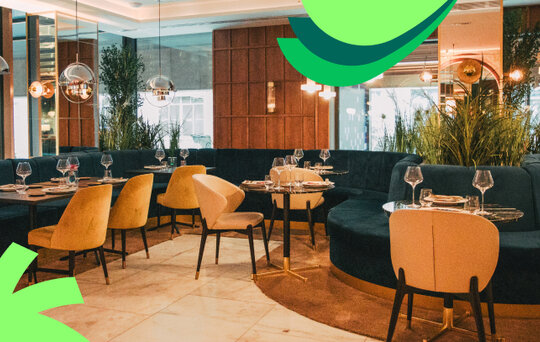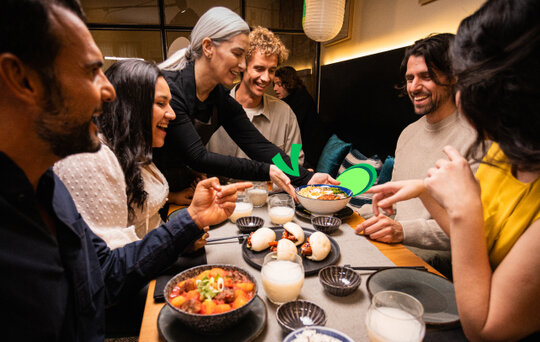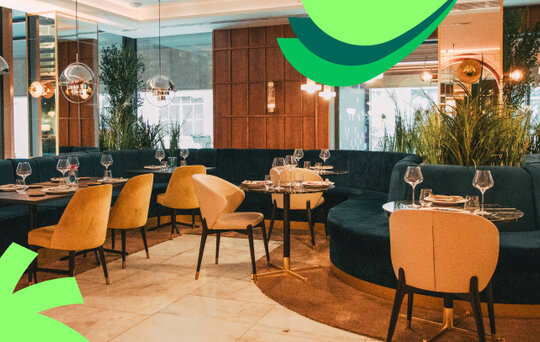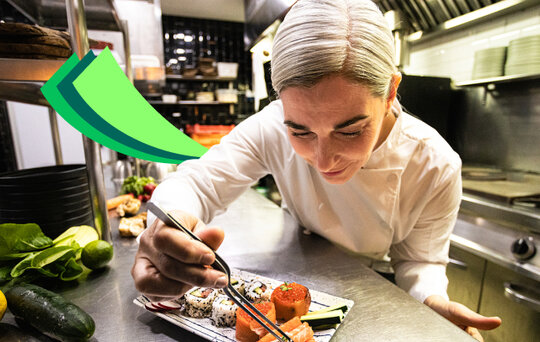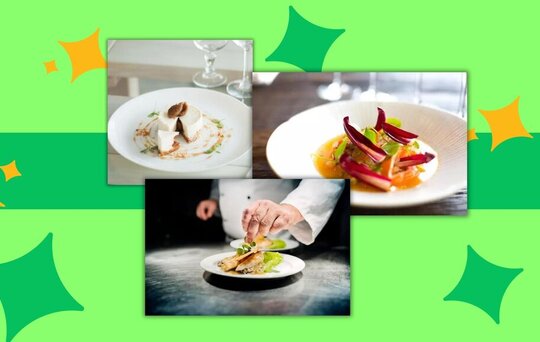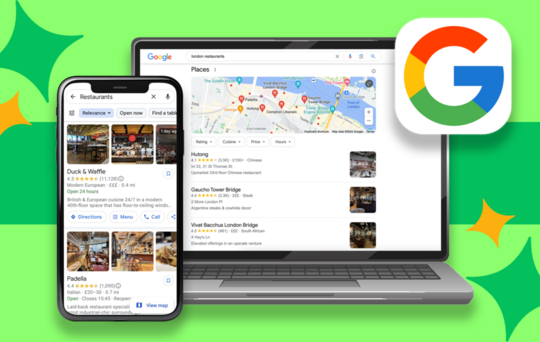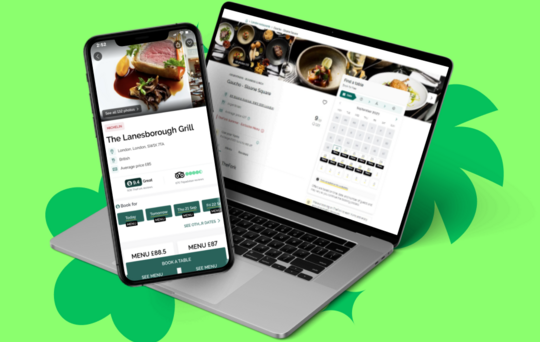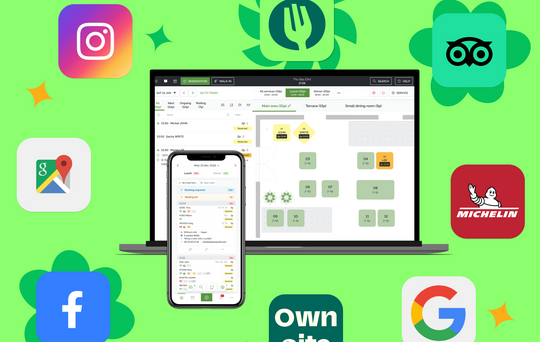How to build a restaurant menu: best practices for UK restaurants

- • Understanding your target audience to build a restaurant menu
- • How to create a restaurant menu that entices and guides
- • Try TheFork Manager today
- • How to build a restaurant menu for profit
- • How to create a restaurant menu and keep it updated
- • TheFork Manager: More than a restaurant menu
- • Empty tables and ever-increasing costs?
An attractive menu is crucial for drawing in new customers and ensuring your regulars keep coming back. So, how can you create a restaurant menu that not only looks great but also enhances the customer experience and maximises profits?
This article is here to help UK restaurateurs learn how to build a restaurant menu that entices diners and drives sales. We’ll cover the best practices on how to develop a restaurant menu, from selecting the right dishes to using effective pricing strategies and much more.
Understanding your target audience to build a restaurant menu
So, where to start?
If you’re wondering how to build a restaurant menu that captures your customers' attention, the first step is to understand them. That means researching your ideal customers’ tastes, preferences and dining habits. Follow these three steps to get started:
- Identify your target audience and their preferences: Before diving into how to design a restaurant menu, it’s essential to know your audience. Are the majority of your customers' young families looking for comfort grub or are millennials craving the latest food trends? Knowing your target audience will help you understand how to create a restaurant menu that truly resonates with your guests.
- Consider your restaurant’s location, ambience and price point: A cosy, neighbourhood spot might feature hearty food made from local ingredients, while a trendy, urban restaurant could offer modern, eclectic dishes. Also, consider your price point—your menu should reflect what your customers are willing to spend and fit your restaurant’s style.
- Define your restaurant’s concept and cuisine type: If you’re wondering how to create a restaurant menu that aligns with your brand, start by defining your concept and offerings. Are you a Mediterranean bistro, a vegan café or a classic steakhouse? With so much competition in the modern UK restaurant scene, it’s important to stay true to your concept while exploring the latest food trends to keep your menu relevant and exciting.
How to create a restaurant menu that entices and guides
When it comes to designing a menu for a restaurant, there are two popular formats to consider: the traditional paper menu card and the innovative QR code menu. Whether you prefer a digital menu that customers can access easily on their phones or a classic printed menu, the core principles of designing a restaurant menu remain the same.
Both formats need to be clear, engaging and reflective of your brand. While digital menus offer the flexibility to update dishes easily, traditional menus provide a tangible experience. Let’s explore how to make each format work best for your restaurant.
Designing a restaurant menu card
Knowing how to design a restaurant menu effectively can enhance your customer experience and boost sales. Here are three key tips:
- Organise menu items into logical categories: Start by grouping similar dishes into categories such as appetisers, mains, desserts and drinks. This makes your menu easy to navigate, helping customers find what they want with ease.
- Use a clear and consistent layout: The last thing hungry customers want is to find themselves lost in an overly complicated and dense menu. Keep your layout clean and consistent with easy-to-read fonts and plenty of white space. A simple, organised design is essential for creating a menu that’s both visually appealing and user-friendly.
- Utilise visual cues to highlight signature dishes: Draw attention to your most popular or profitable dishes with bold fonts or icons. This approach can guide customer choices and increase sales. Additionally, visual cues can be used to highlight dishes that contain common allergens or are suitable for specific dietary needs.
How to write a restaurant menu description
Crafting compelling menu descriptions is key to attracting customers. Even if you’re not a professional copywriter, you can write descriptions that get your customers’ mouths watering.
- Employ descriptive language that appeals to the senses: Use words that evoke taste, smell and texture to bring dishes to life. Phrases like "succulent, tender chicken" or "crispy, golden fries" help diners imagine the experience, making your restaurants’ offerings irresistible.
- Highlight key Ingredients and unique selling points: Be sure to mention locally sourced or high-quality ingredients and emphasise what makes each dish special. This not only informs customers but it can help to set your restaurant apart from the competition.
Keep descriptions concise and easy to read: Although it’s important to make your menu sound appealing, don’t go overboard. Your customers are here to eat, after all!
Avoid lengthy descriptions; keep them short and engaging. This makes it easier for customers to choose what they want and prevents them from getting overwhelmed.
Try TheFork Manager today
How to build a restaurant menu for profit
Creating a profitable menu involves more than just selecting popular dishes; it requires strategic pricing.
- Factor in food costs, labour costs and overhead expenses: Calculate the total cost of each dish, including ingredients, preparation time and overhead. This is the foundation of how to build a restaurant menu that ensures every item contributes to your bottom line.
- Set prices that are competitive but also profitable: Research your competitors to determine a price range, but ensure your prices cover all costs while leaving you with a healthy profit margin.
- Leverage psychological pricing techniques: Use strategies like charm pricing (e.g., £9.99 instead of £10) to make prices more appealing and subtly influence customer spending.
How to create a restaurant menu and keep it updated
An effective menu is always current and relevant. Here’s how to keep your menu fresh:
- Regularly review and update your menu: Use customer feedback and monitor market trends to refine your menu and ensure you remain on your customers’ radar.
- Introduce seasonal specials: This is an effective way to keep your menu fresh and exciting and gives your customers a reason to keep coming back.
- Utilise menu design software: Menu design software makes it easy to update your menu without costly reprints. This tool is invaluable when thinking about how to create a digital restaurant menu that can be quickly adjusted and updated to help you stay current.
TheFork Manager: More than a restaurant menu
A tool like TheFork Manager can greatly enhance your restaurant’s marketing operations. It allows you to easily create and share a dynamic restaurant menu in real time, complete with photos, dish descriptions, customer reviews and more. Plus, it offers the convenience of one-click reservations, making it simpler for diners to book a table instantly. This versatility goes beyond just how to make a restaurant menu; it’s about streamlining the entire dining experience for both customers and restaurateurs.
Want to learn more about how TheFork Manager can benefit your restaurant? Contact us today to discover more about TheFork Manager and how it can help you grow your business!
Empty tables and ever-increasing costs?
- Understanding your target audience to build a restaurant menu
- How to create a restaurant menu that entices and guides
- Try TheFork Manager today
- How to build a restaurant menu for profit
- How to create a restaurant menu and keep it updated
- TheFork Manager: More than a restaurant menu
- Empty tables and ever-increasing costs?

